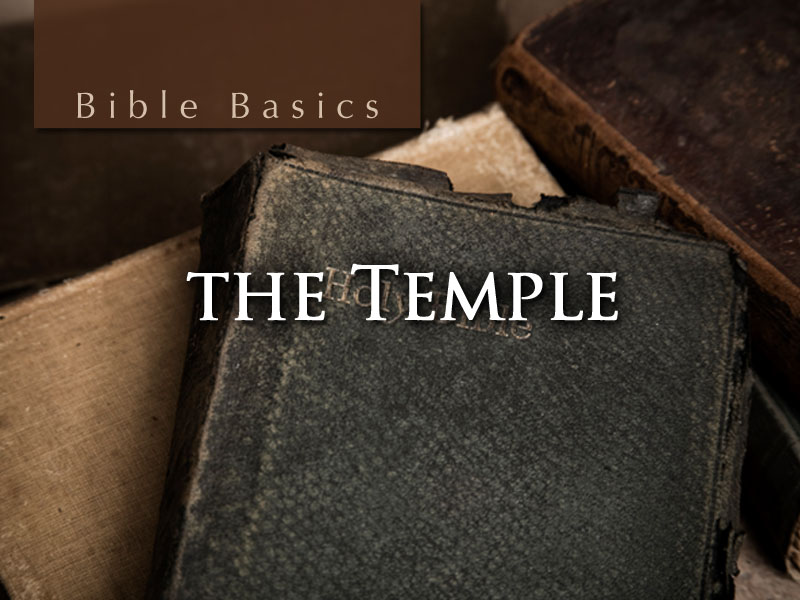
This site was said to be the dwelling place of the Lord Himself. It was supposed to have been a house of prayer, the holiest site on earth. Instead, it had become a profit-center for merchants, swindlers, and thieves. It was also the scene of one of Jesus’ most controversial and misunderstood acts.
Throughout the gospels, we read about a special place that played a significant role in the land of Palestine during the first century. This place influenced the culture in which Christ ministered, and He tailored His message to reach and respond to the people who met here. Learning more about this place can add greater detail and deeper understanding to our study of the gospels. What follows is a thumbnail sketch of the Temple.
Historical Development (After 200 BC)
- When the Israelites returned from exile, they reconstructed what would come to be known as Zerubbabel’s Temple.
- Zerubbabel’s Temple often served as stronghold during times of dispute among various warring parties in the first and second centuries B.C. As a result, the Temple sustained significant damage.
- In response to complaints that the Temple was a shadow of its former glory, Herod ordered the reconstruction of the Temple in 20-19 B.C. The rebuilt Temple was intended to serve as an eternal monument to him.
- With the exception of adorning features, which continued to be added for many decades, construction of Herod’s Temple was completed by 10 B.C.
- Herod’s Temple was renowned for its beauty throughout the Roman world.
- Some rejected the Temple that existed during the time of Christ, arguing that it had not been built to the specifications provided by God for the construction of Solomon’s Temple.
- Herod’s Temple was destroyed by fire in an assault by the Roman general Titus in 70 A.D.
Function and Importance in the Time of Christ
- The Temple was considered to be the dwelling place of God.
- The Temple was regarded as a sign of Israel’s stauts as God’s chosen people.
- The social, economic, and political life of first-century Jerusalem was intricately linked to the practice and function of the Temple.
- The Temple served as an enormous consumer of the goods and services provided by the merchants and tradesmen of the city. Among the trades dependant upon the Temple’s operation were the woold baking, olive oil, pottery, butchery, construction, and stone cutting industries.
- Each strata of Jerusalem’s class system was associated with the activity of the Temple in some fashion.
- To some degree, all citizens of Jerusalem were dependent upon Temple revenues for their livelihood.
- One third of Jerusalem’s population was comprised of religious functionaries whose subsistence was tied to the existence and function of the Temple. Among these were the high priest, numerous chief priests, 7200 ordinary priests, and 9600 Levites.
Significance in the Ministry of Christ
- The Temple served as the backdrop for Christ’s first recorded teaching ministry as a boy (Luke 2:46-47).
- Jesus held the Temple in high regard, saying that it should be “a house of prayer for all the nations” (Mark 11:17).
- On two separate occasions, Jesus drove out merchants and money changers from the Temple courts for perverting the intended purpose of the Temple (john 2:13-22; Mark 11:15-18).
- Jesus used the Temple as a point of reference to predict His own death and resurrection (John 2:19).
- The Temple served as the setting for a number of Christ’s miracles and conflicts with the religious leaders.
- Jesus used discussion about the Temple as a launching point for discourse about the tribulation and the establishment of His kingdom (Matthew 24:2).
- When Christ died, the Temple curtain, which separated the Holy of Holies from the Holy Place, was torn in two. This occurrence symbolized the access Christ’s death provided for man to enjoy fellowship with God (Matthew 27:51).
Resources for Further Study
- Green, J., McKnight, S., and Marshall, I.H. (eds.) Dictionary of Jesus and the Gospels (Downers Grove, IL: Intervaristy Press, 1992)
- Shelley, Bruce. Church History in Plain Language, rev. ed. (Dallas, TX: Word Books, 1995)
- Tenney, Merrill C. The Zondervan Pictoral Encyclopedia of the Bible, vol. 4 (Grand Rapids: Zondervan, 1975)
 Church
Church